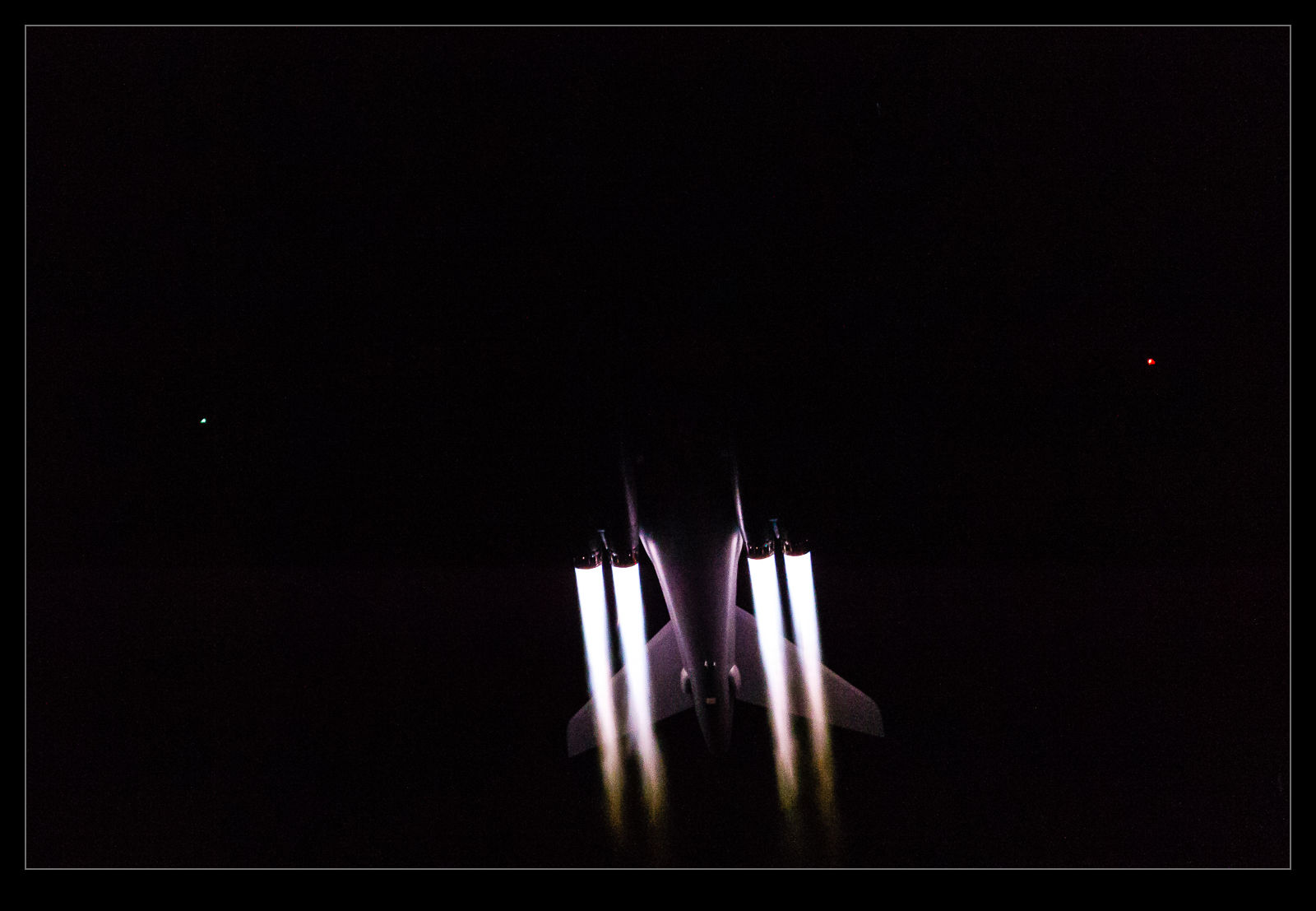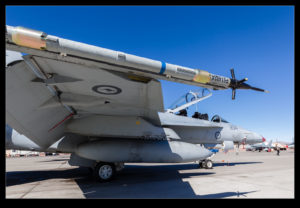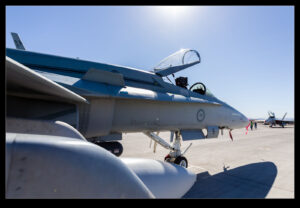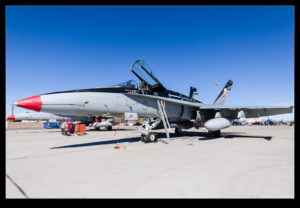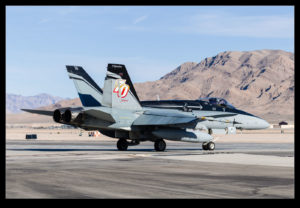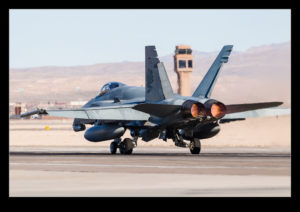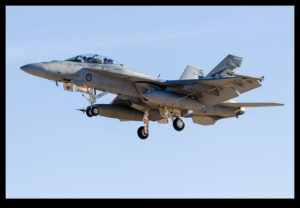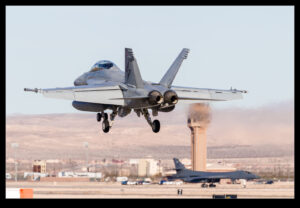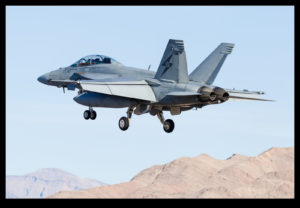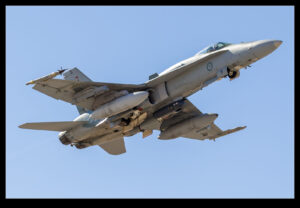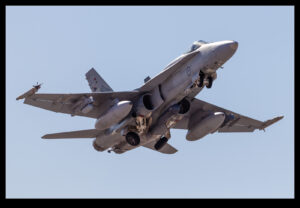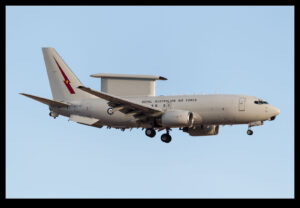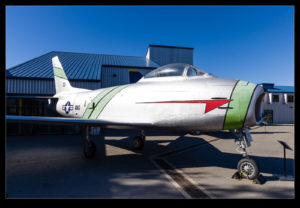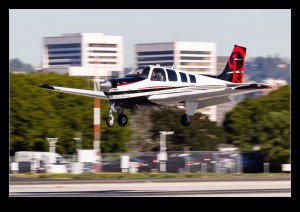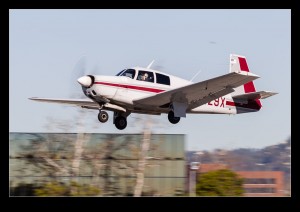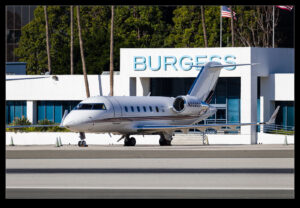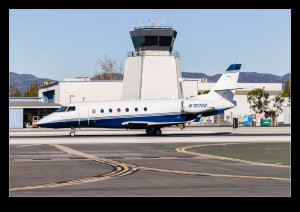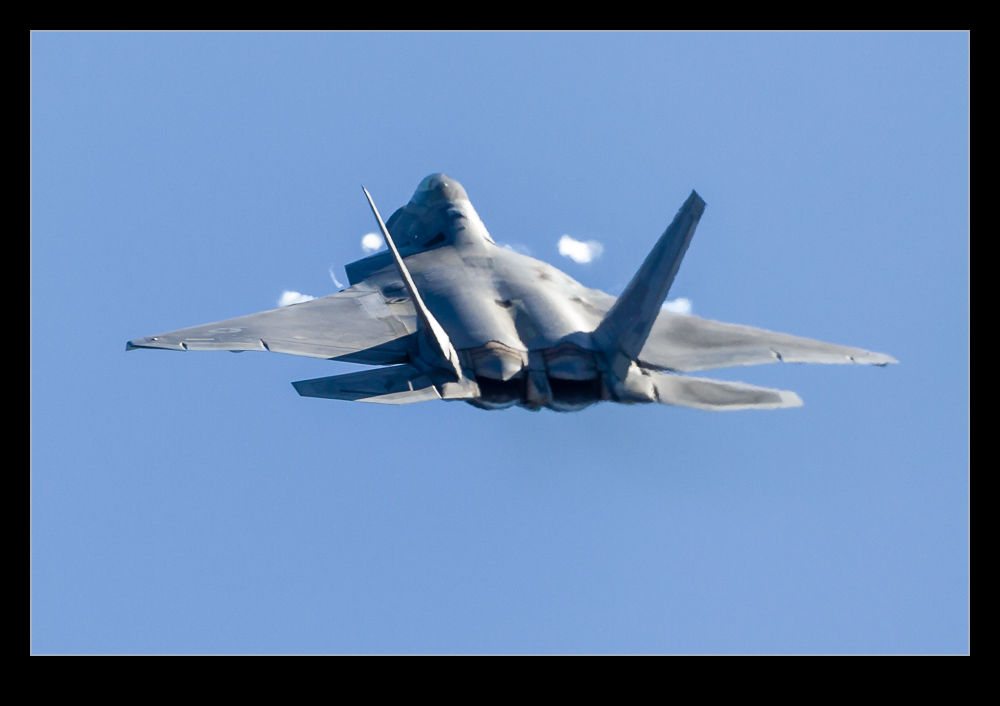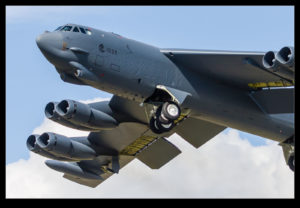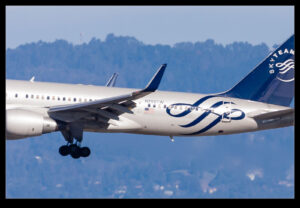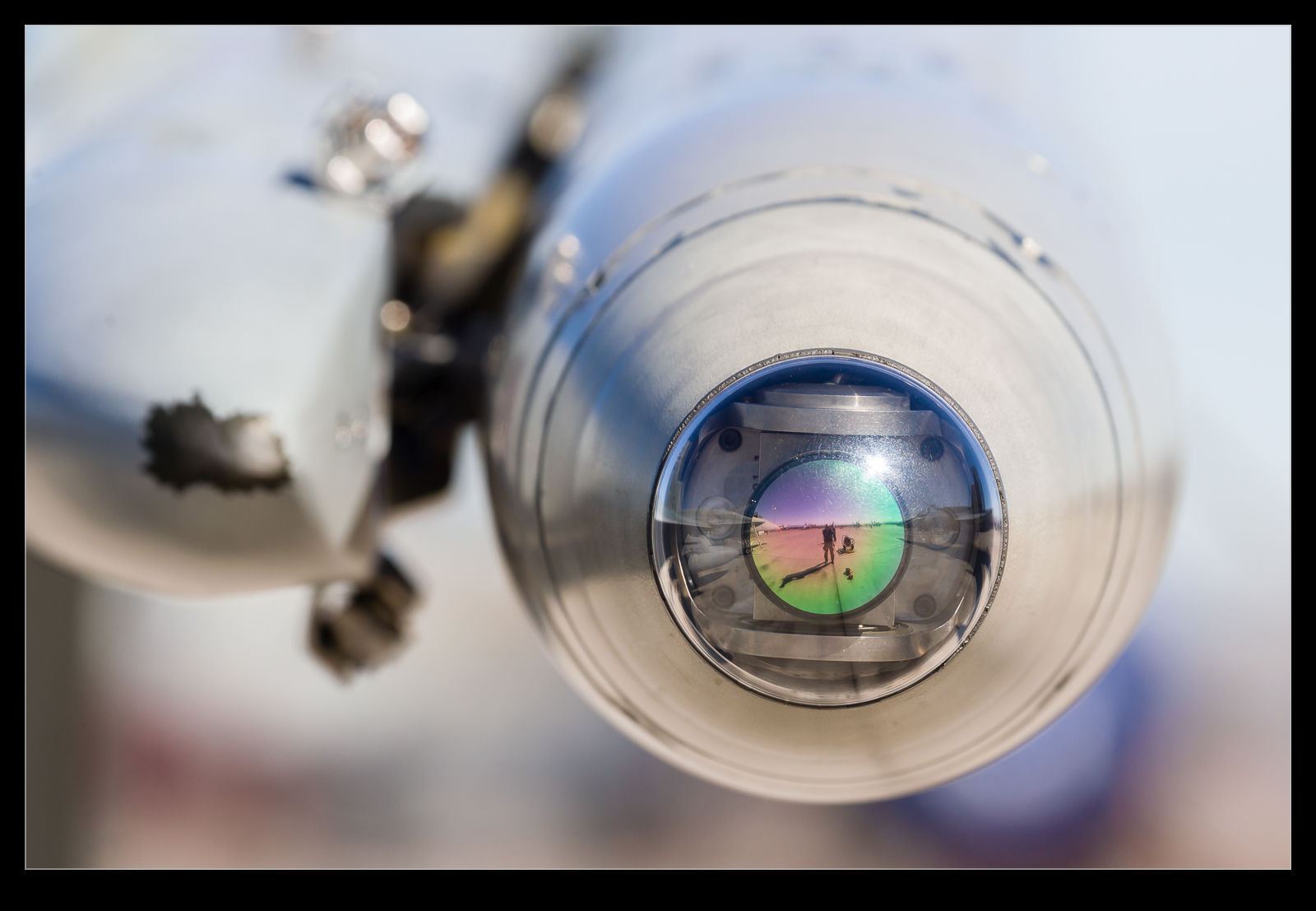 While waking along the ramp occupied by the RAAF Hornets, one of the ASRAAM missiles on the wingtip launch rail of an A-model Hornet had its seeker cover removed. It was dangling by a strap and I was going to ask one of the ground crew if we should replace it. Then I got distracted by the seeker itself. It looked pretty cool and was reflecting light in an interesting way. Naturally, when you are near something reflective, the idea of a self-portrait jumps to mind if you are a little self-obsessed so I couldn’t help myself. Many years ago I worked on an ASRAAM seeker development related task using the company Jetstream testbed so I can pretend all of this is a technical interest and not narcissism at all.
While waking along the ramp occupied by the RAAF Hornets, one of the ASRAAM missiles on the wingtip launch rail of an A-model Hornet had its seeker cover removed. It was dangling by a strap and I was going to ask one of the ground crew if we should replace it. Then I got distracted by the seeker itself. It looked pretty cool and was reflecting light in an interesting way. Naturally, when you are near something reflective, the idea of a self-portrait jumps to mind if you are a little self-obsessed so I couldn’t help myself. Many years ago I worked on an ASRAAM seeker development related task using the company Jetstream testbed so I can pretend all of this is a technical interest and not narcissism at all.
Tag Archives: military
Another Night Launch on a Cold and Windy Night
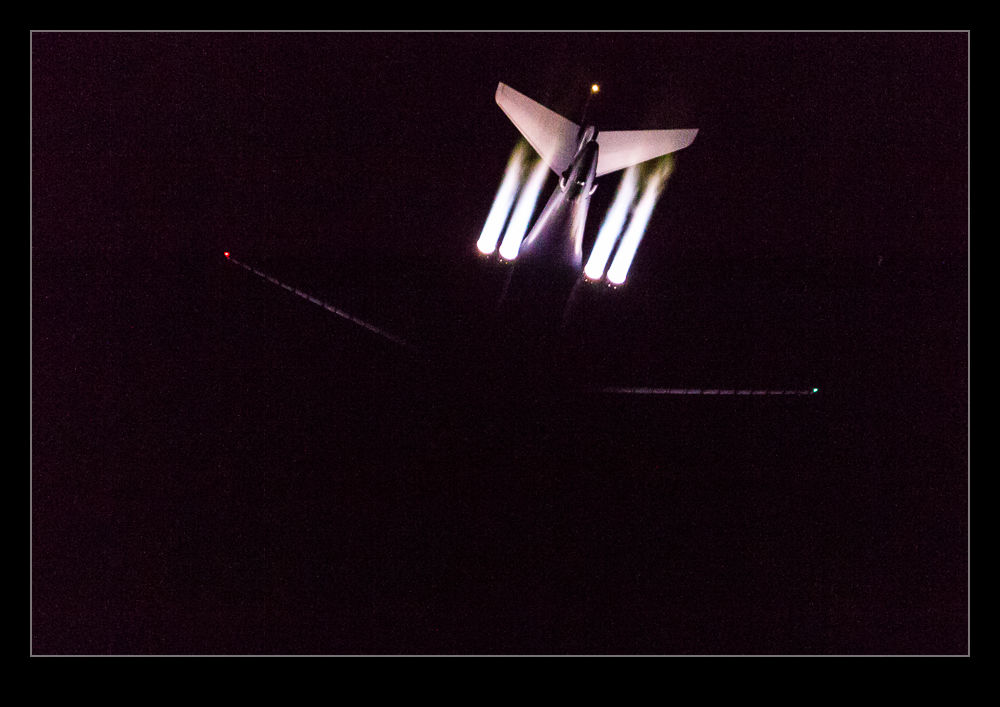 The evening launch at Red Flag is something I have had a go at on a number of occasions. Consequently, regular readers that pay close attention may feel that this post is a bit repetitive and they would be correct. I was a bit better prepared for the night launch than on previous occasions. I had brought a cable release and a Gorillapod to allow me to have a bit better a set up for the time lapse video of the launch. Meanwhile, I was shooting handheld with the second body.
The evening launch at Red Flag is something I have had a go at on a number of occasions. Consequently, regular readers that pay close attention may feel that this post is a bit repetitive and they would be correct. I was a bit better prepared for the night launch than on previous occasions. I had brought a cable release and a Gorillapod to allow me to have a bit better a set up for the time lapse video of the launch. Meanwhile, I was shooting handheld with the second body.
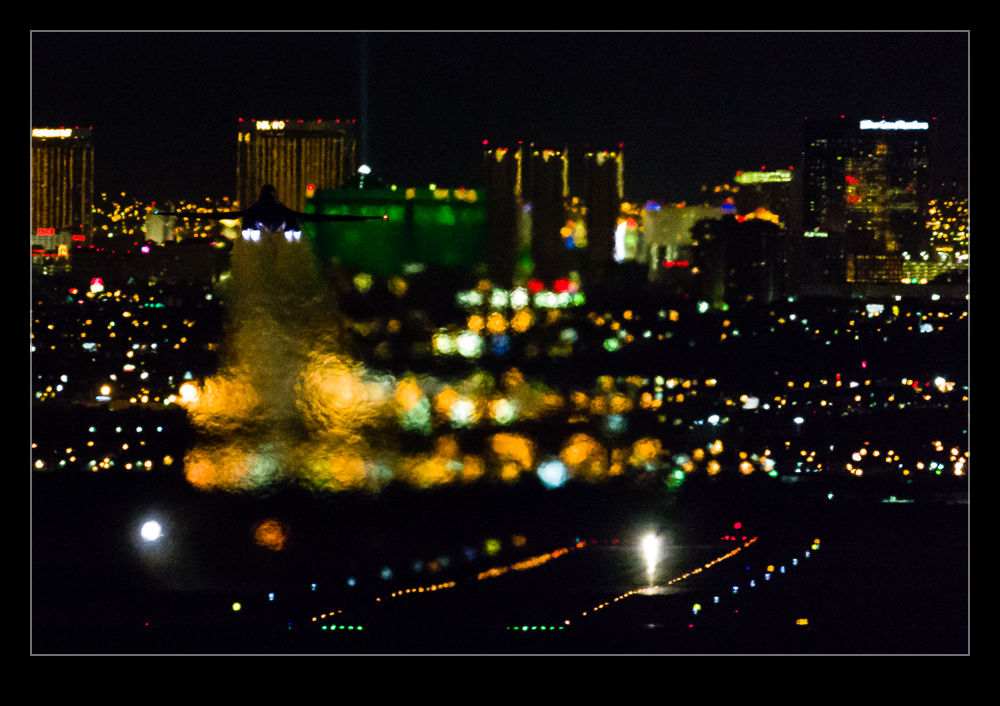 Sadly, a couple of things were not working in my favor. First, it was pretty windy and, while I had the camera set up on the hood of the car, it was a bit vulnerable to movement as the car moved in the wind and the camera vibrated on the pod. Consequently, some of the video is less than ideal. However, conditions did seem to settle down a bit and the later part of the video seems to steady up a bit.
Sadly, a couple of things were not working in my favor. First, it was pretty windy and, while I had the camera set up on the hood of the car, it was a bit vulnerable to movement as the car moved in the wind and the camera vibrated on the pod. Consequently, some of the video is less than ideal. However, conditions did seem to settle down a bit and the later part of the video seems to steady up a bit.
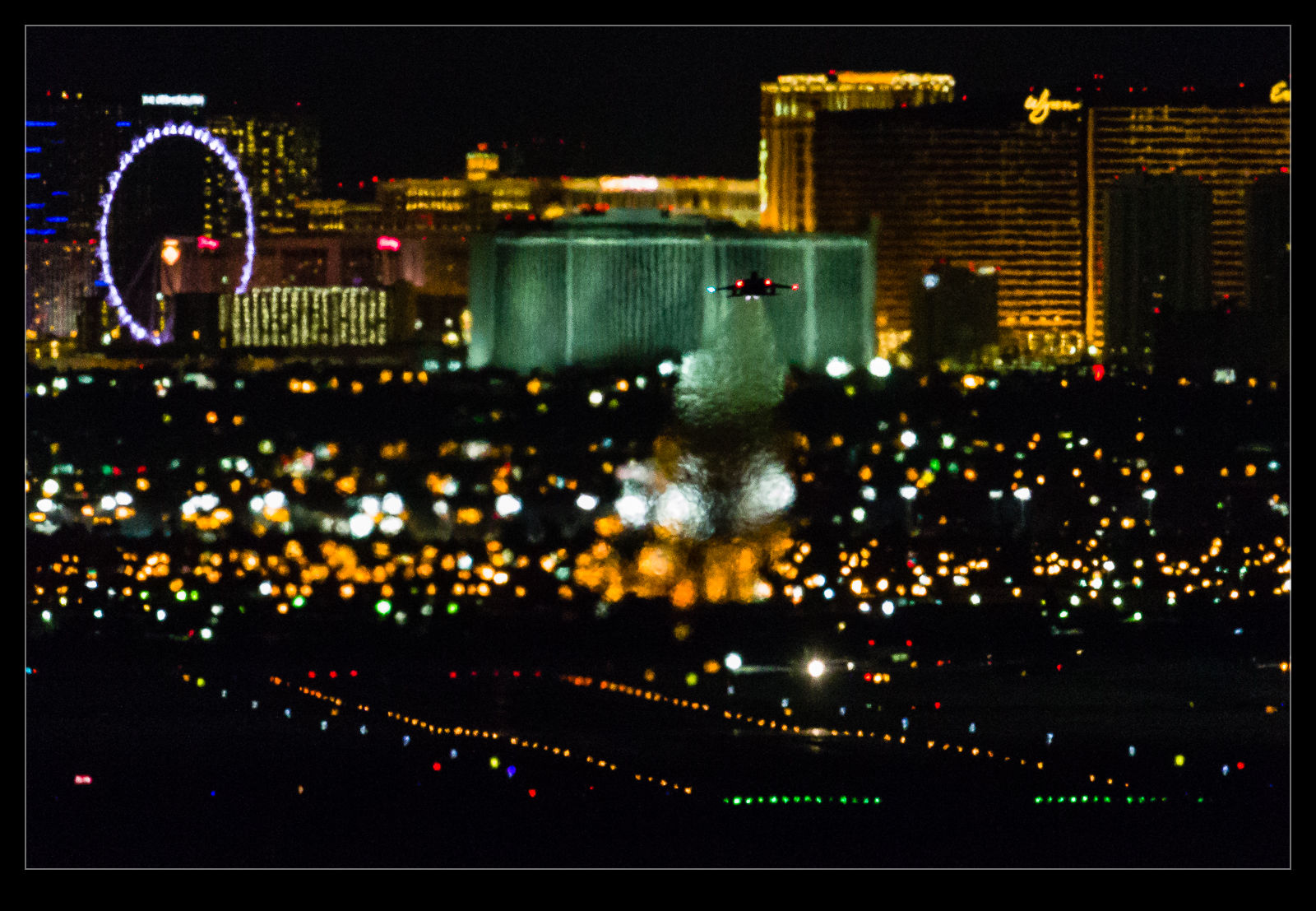 Second was that there was no moon. It was very dark and cold out there. I managed to get some shots of the B-1B launches but the only illumination was from the burners. No ambient light at all so they didn’t look as good as on previous attempts. I did try to stay for the whole launch and not to get the time lapse showing things in full swing when it ends but there is a limit to how long you want to hang out in the cold when everyone else has gone. I got most of the launch but I did see a bunch of jets head out as I passed the speedway. I probably should have tried getting some shots from there as they were still in burner at that point.
Second was that there was no moon. It was very dark and cold out there. I managed to get some shots of the B-1B launches but the only illumination was from the burners. No ambient light at all so they didn’t look as good as on previous attempts. I did try to stay for the whole launch and not to get the time lapse showing things in full swing when it ends but there is a limit to how long you want to hang out in the cold when everyone else has gone. I got most of the launch but I did see a bunch of jets head out as I passed the speedway. I probably should have tried getting some shots from there as they were still in burner at that point.
A Feel for the EOR
During the recent Red Flag 16-1, which I was covering for Global Aviation Resource, I got to spend a portion of the day at the South EOR. EOR means end of the runway and this is where the planes come prior to taking off. They go through their final checks before launching and we get to be very close to them. I was mainly taking stills for the GAR feature but I got some video while I was there. I wanted to have something that shows what it feels like and how close we were. Consequently, some of the shots involve my fellow photographers so you can have some context of where we were.
The Aussies Are in Town
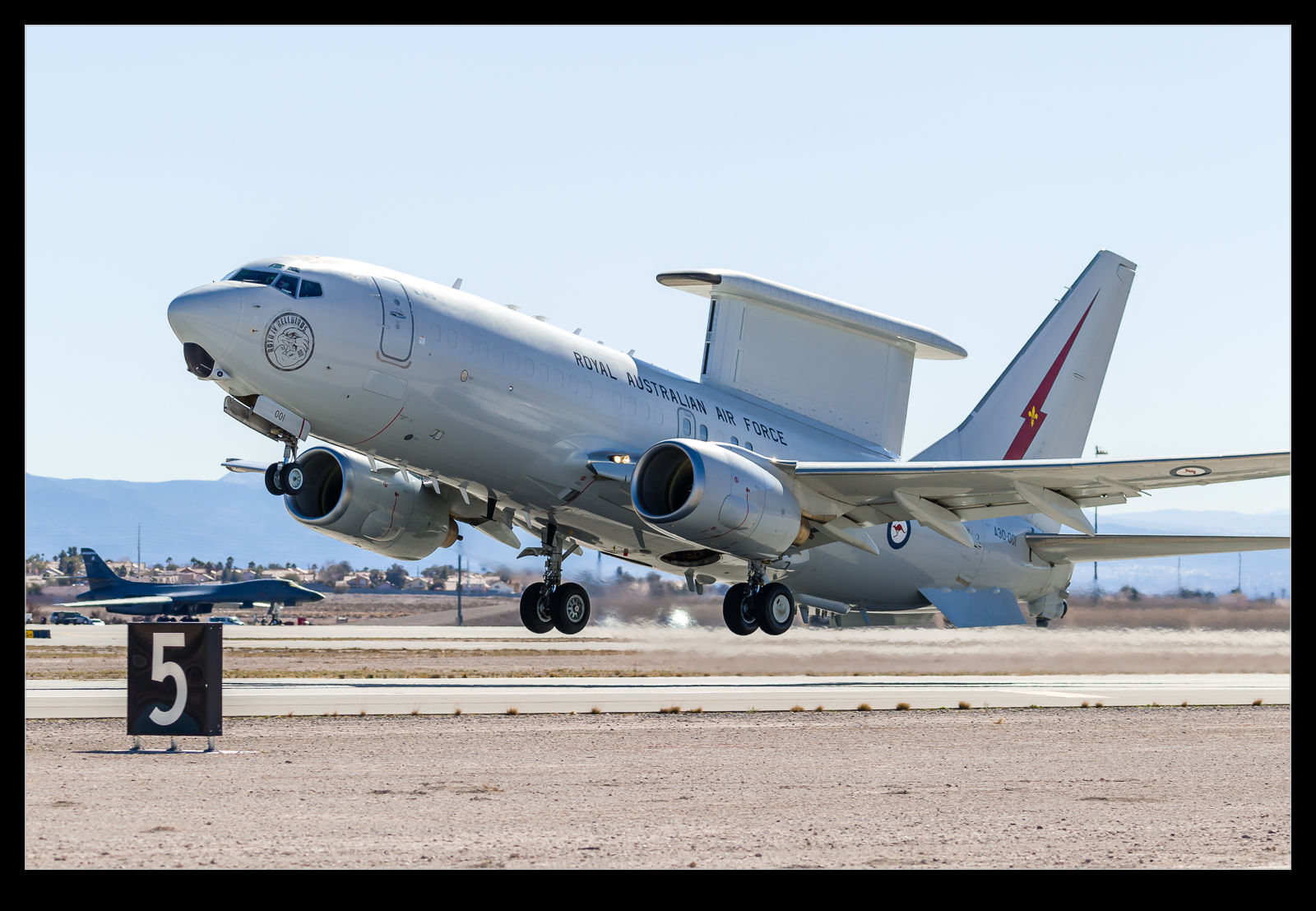 One of the things that I was really looking forward to about Red Flag 16-1 was the large Australian contingent that was going to be present. The Aussies were coming with Hornets and Super Hornets as well as a P-3 and an E-7 Wedgetail. They were also tanked across by a KC-30 although that sadly went somewhere else so I didn’t see it while I was there. Another benefit of the Aussies is that they bring some fun to the media panel. Sometimes these can be rather dull affairs and like pulling teeth. Previous RAAF officers have been very chatty and informative. This time was no exception.
One of the things that I was really looking forward to about Red Flag 16-1 was the large Australian contingent that was going to be present. The Aussies were coming with Hornets and Super Hornets as well as a P-3 and an E-7 Wedgetail. They were also tanked across by a KC-30 although that sadly went somewhere else so I didn’t see it while I was there. Another benefit of the Aussies is that they bring some fun to the media panel. Sometimes these can be rather dull affairs and like pulling teeth. Previous RAAF officers have been very chatty and informative. This time was no exception.
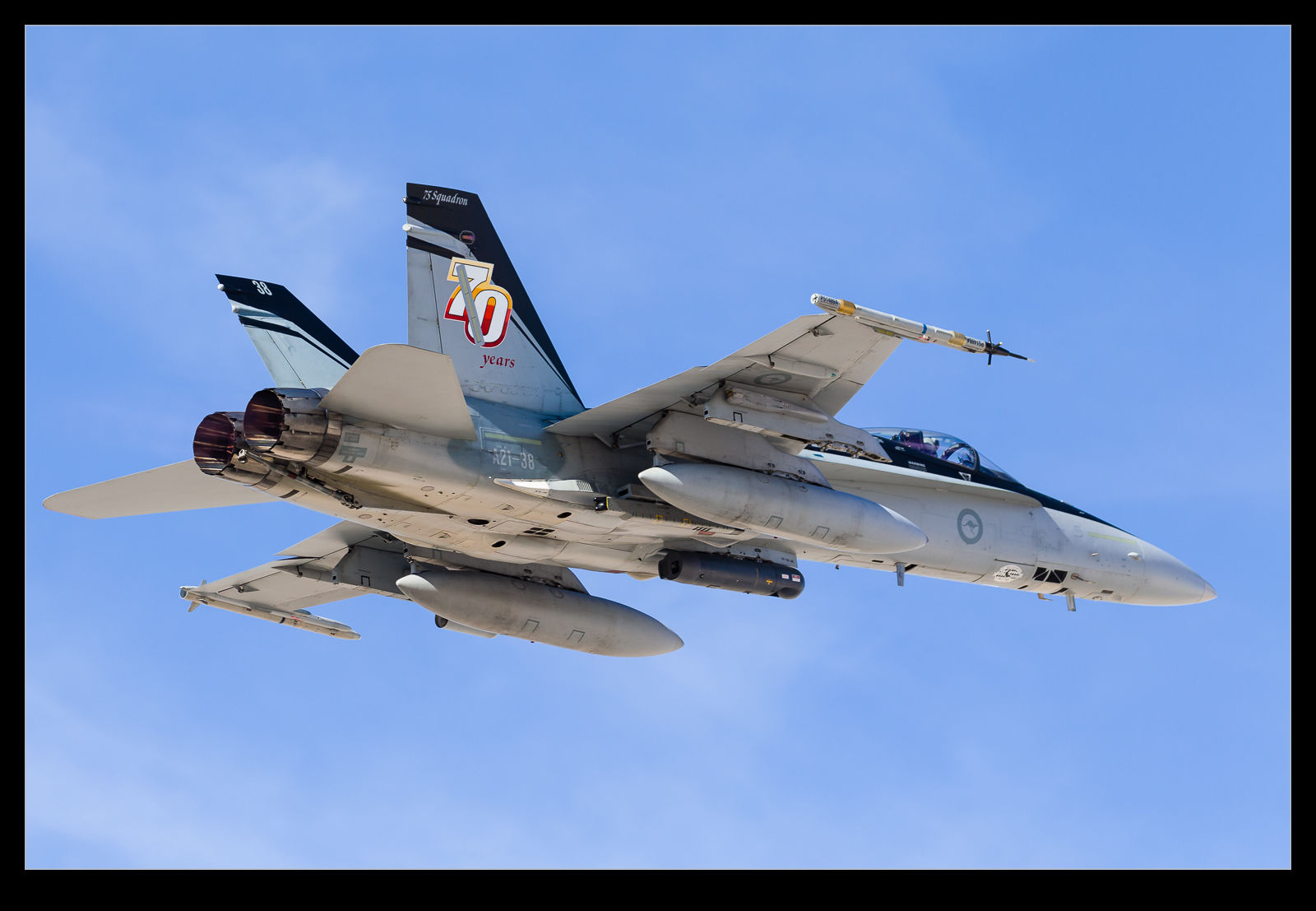 I was pleased that the Wedgetail flew on the main media day. They were alternative AWACS resources and whether this was planned or luck I don’t know. I am just glad I got to see it fly. The Hornets have been to previous Red Flags but this was the first exercise for the Super Bugs. They have been deployed on operations, though, judging by the mission markings some jets were carrying.
I was pleased that the Wedgetail flew on the main media day. They were alternative AWACS resources and whether this was planned or luck I don’t know. I am just glad I got to see it fly. The Hornets have been to previous Red Flags but this was the first exercise for the Super Bugs. They have been deployed on operations, though, judging by the mission markings some jets were carrying.
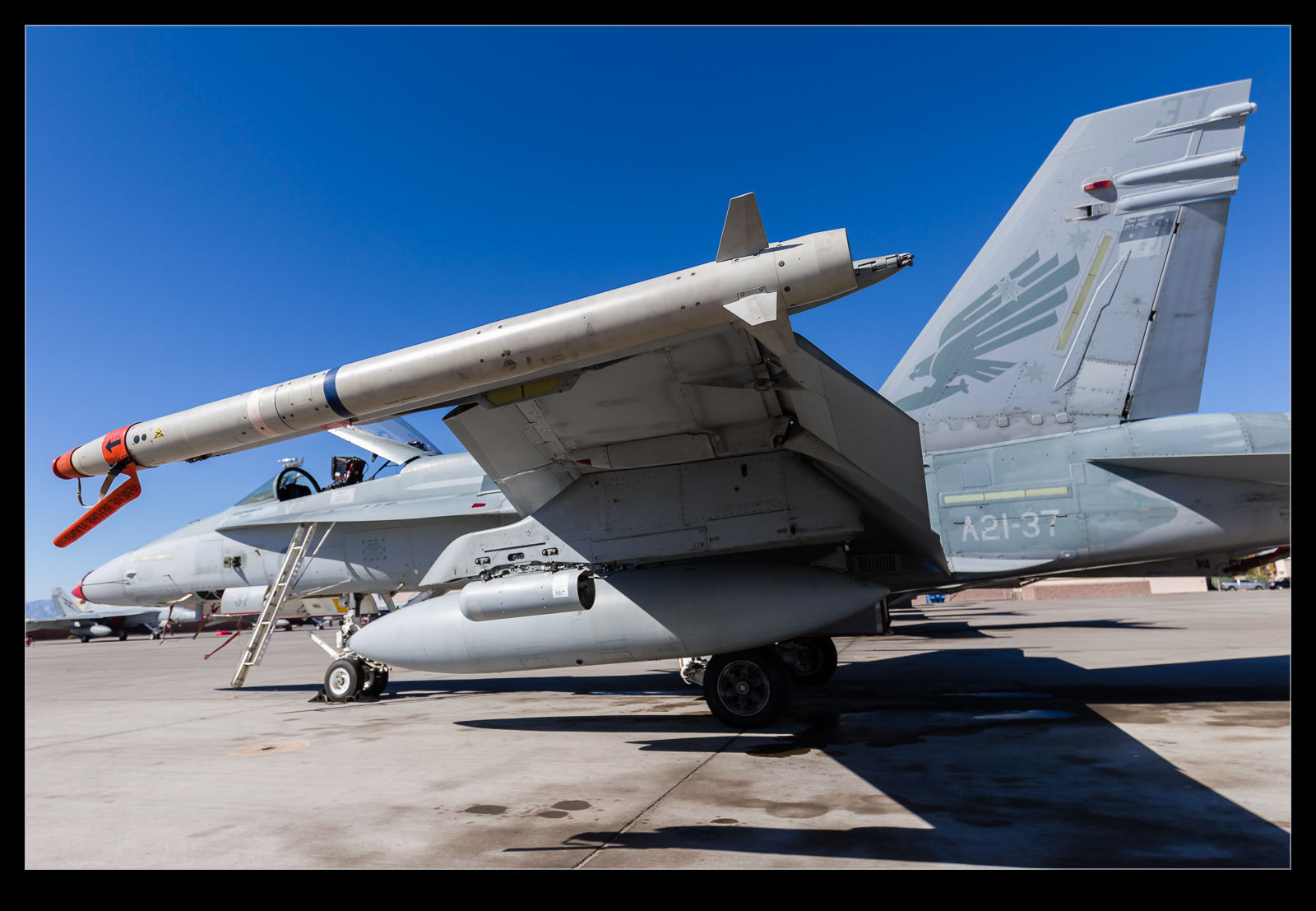 I was included in a second day on base when we got to spend some time on the Aussie ramp prior to the launch of the first mission. A team of RAAF personnel escorted us around as we got a chance to check out both generations of Hornet. One of the legacy Hornets was carrying squadron anniversary markings which looked good on it. The team was operating out of a building that they had temporarily adorned with something more personnel. If you don’t immediately get it, say the phrase out loud as a response to the question “Where are you from?”
I was included in a second day on base when we got to spend some time on the Aussie ramp prior to the launch of the first mission. A team of RAAF personnel escorted us around as we got a chance to check out both generations of Hornet. One of the legacy Hornets was carrying squadron anniversary markings which looked good on it. The team was operating out of a building that they had temporarily adorned with something more personnel. If you don’t immediately get it, say the phrase out loud as a response to the question “Where are you from?”
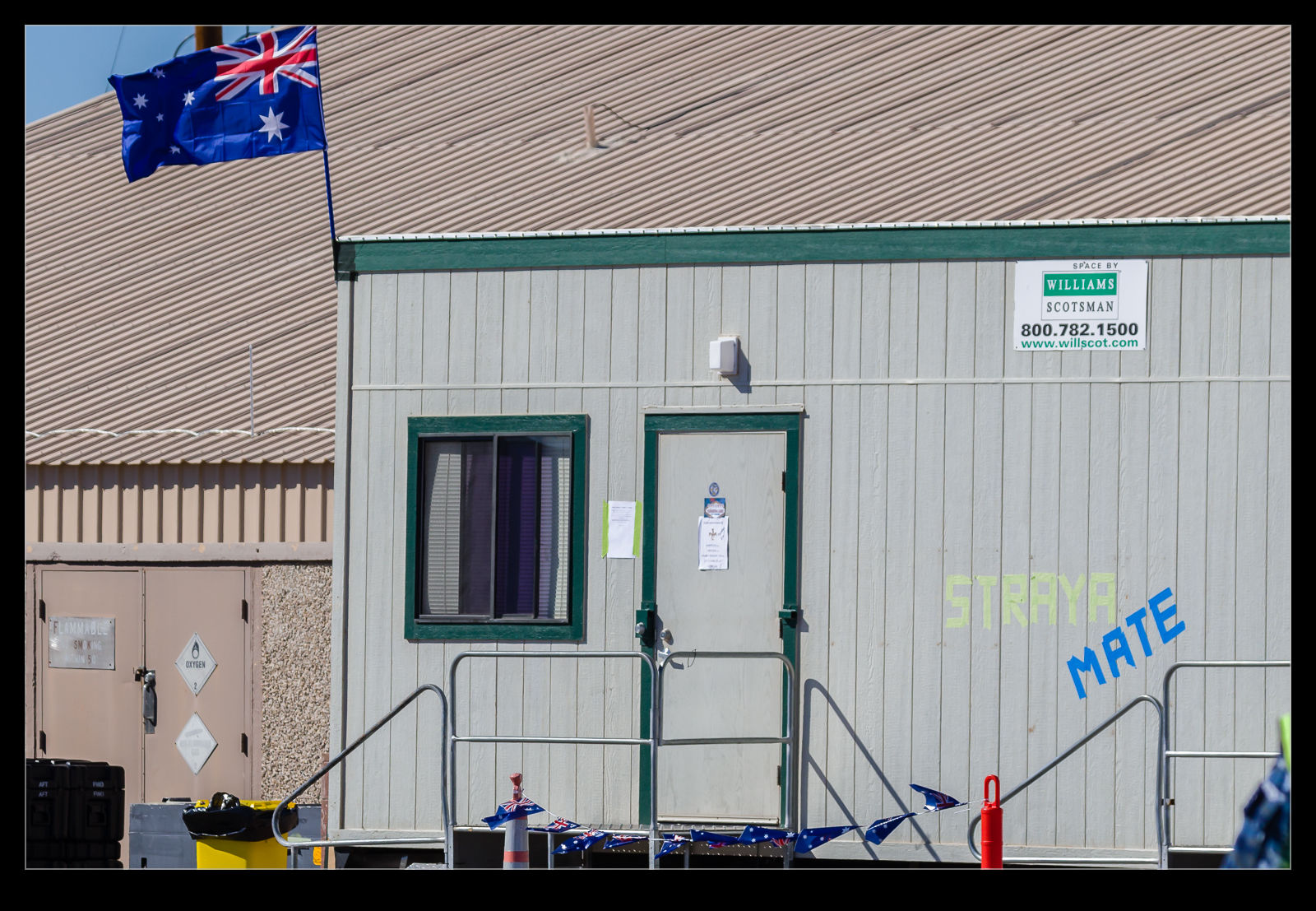 The team was also selling a bunch of squadron swag. I am not a collector of this stuff but it looked pretty cool so I was happy to part with some cash for the squadron funds. Then we retired to the EOR for the launch. Of course, that also included both types of Hornet taxiing out past us on their way to the runway. Cheers to all of the team for being so friendly and accommodating.
The team was also selling a bunch of squadron swag. I am not a collector of this stuff but it looked pretty cool so I was happy to part with some cash for the squadron funds. Then we retired to the EOR for the launch. Of course, that also included both types of Hornet taxiing out past us on their way to the runway. Cheers to all of the team for being so friendly and accommodating.
- A Royal Australian Air Force Boeing F/A-18A Hornet taxis to the runway for departure at Nellis AFB NV.
- A Royal Australian Air Force F/A-18F Super Hornet on final approach to Nellis AFB Las Vegas Nevada as part of a Red Flag mission.
- A Royal Australian Air Force Boeing F/A-18F Super Hornet cames in to land at Nellis AFB NV.
- A Royal Australian Air Force F/A-18A Hornet climbs away from Nellis AFB Las Vegas Nevada on a Red Flag Mission.
- A Royal Australian Air Force Boeing E-7 Wedgetail airborne early warning aircraft on final approach to Nellis AFB NV.
- A Royal Australian Air Force E-7 Wedgetail on final approach at Nellis AFB Las Vegas Nevada after a Red Flag mission.
Santa Monica – The Friendly Airport
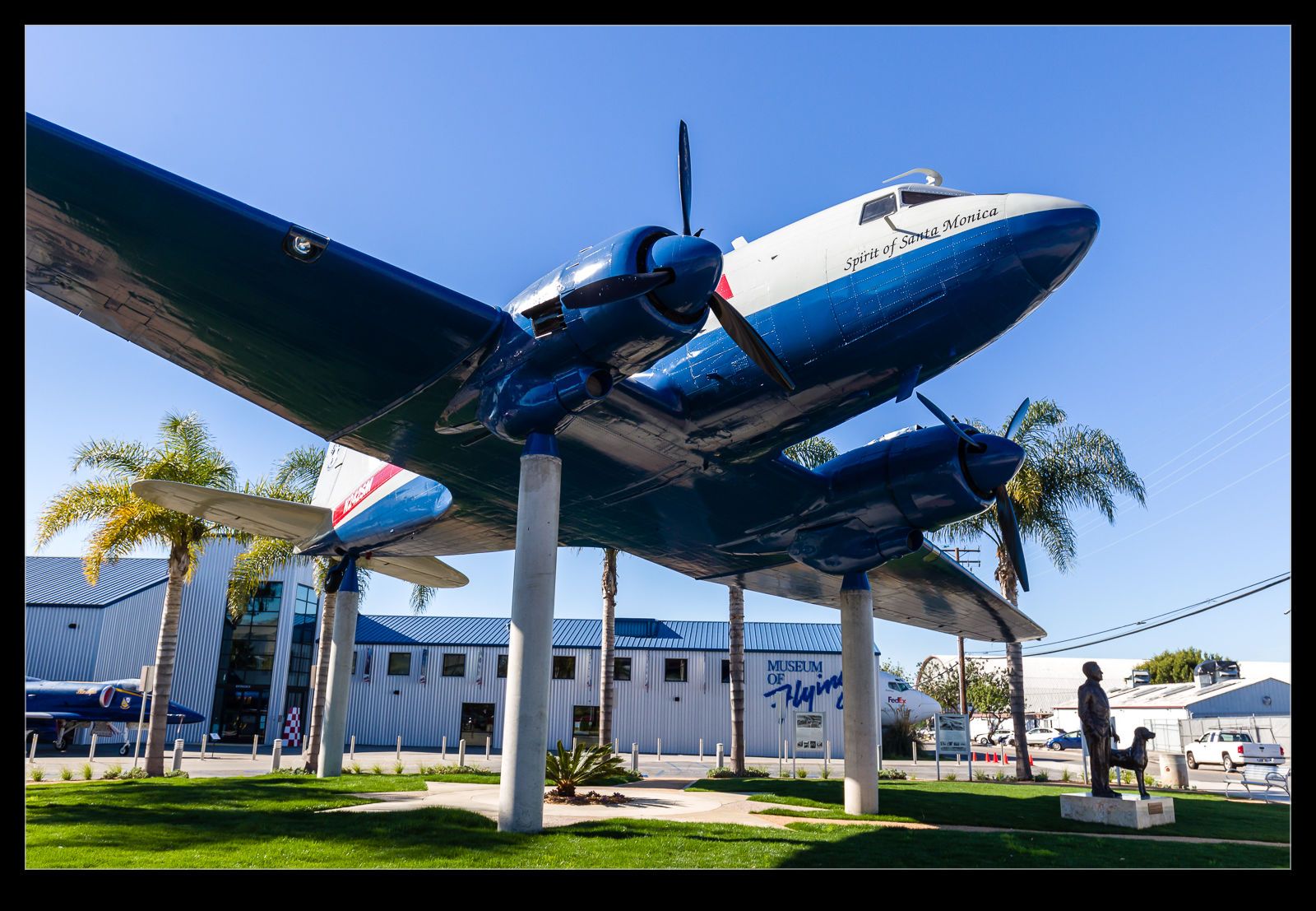 My buddy Pete joined me for some fun in the LA area. Pete is a commercial pilot but any form of aviation appeals to him so we have a lot in common. We had a full day available to go exploring. One part of the day was allocated to a helicopter trip but the rest was open time for us. Our first stop was Santa Monica airport.
My buddy Pete joined me for some fun in the LA area. Pete is a commercial pilot but any form of aviation appeals to him so we have a lot in common. We had a full day available to go exploring. One part of the day was allocated to a helicopter trip but the rest was open time for us. Our first stop was Santa Monica airport.
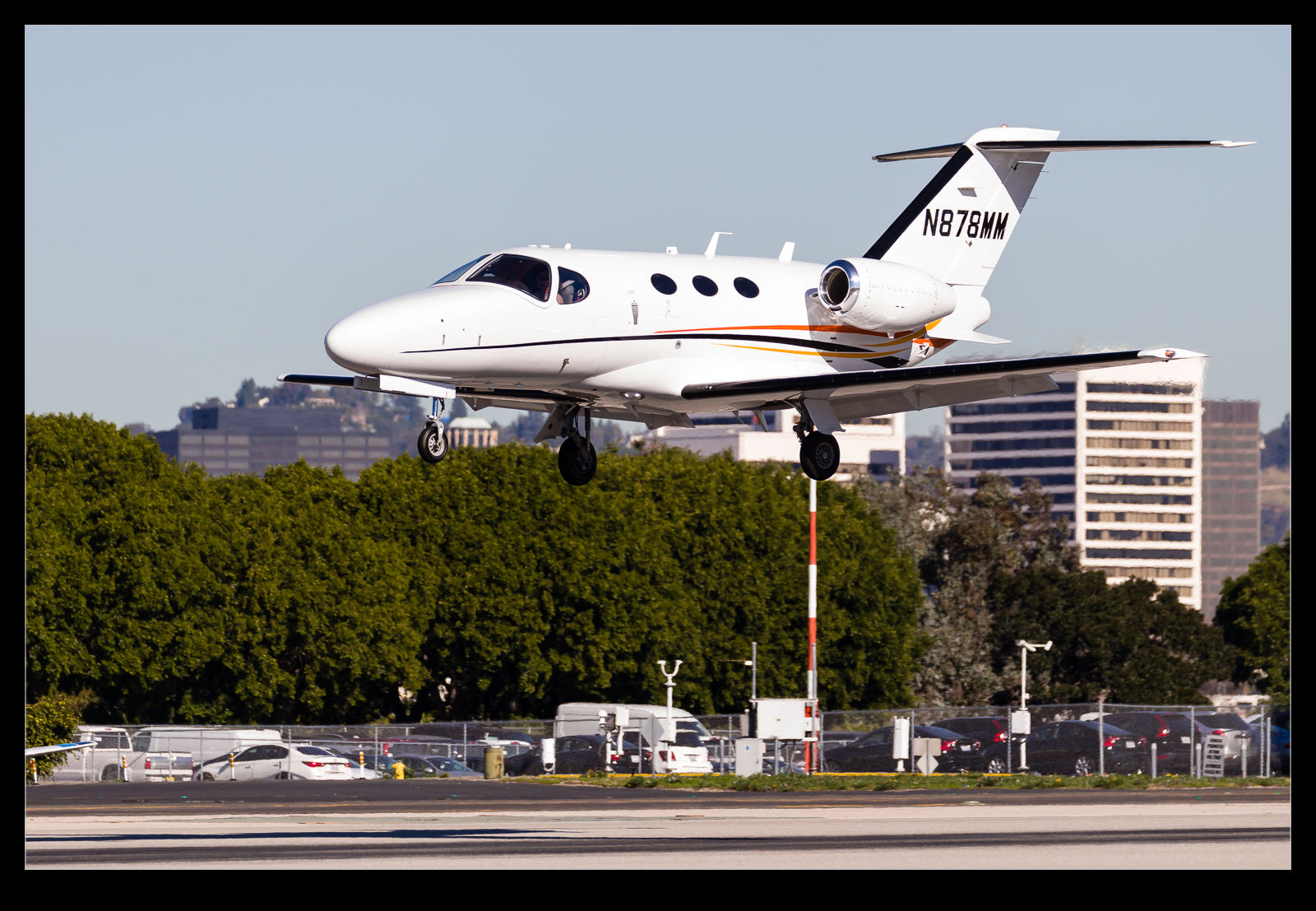 I was introduced to this great place by another friend, Paul, who was, coincidentally, introduced to me by Pete. It is a short distance north of LAX but is the total opposite. Santa Monica accommodates everything from light sport aircraft to some pretty substantial corporate jets. What it also accommodates is visitors. A nice terrace area is laid out at the terminal building providing a great spot to watch operations with the runway only a short distance away.
I was introduced to this great place by another friend, Paul, who was, coincidentally, introduced to me by Pete. It is a short distance north of LAX but is the total opposite. Santa Monica accommodates everything from light sport aircraft to some pretty substantial corporate jets. What it also accommodates is visitors. A nice terrace area is laid out at the terminal building providing a great spot to watch operations with the runway only a short distance away.
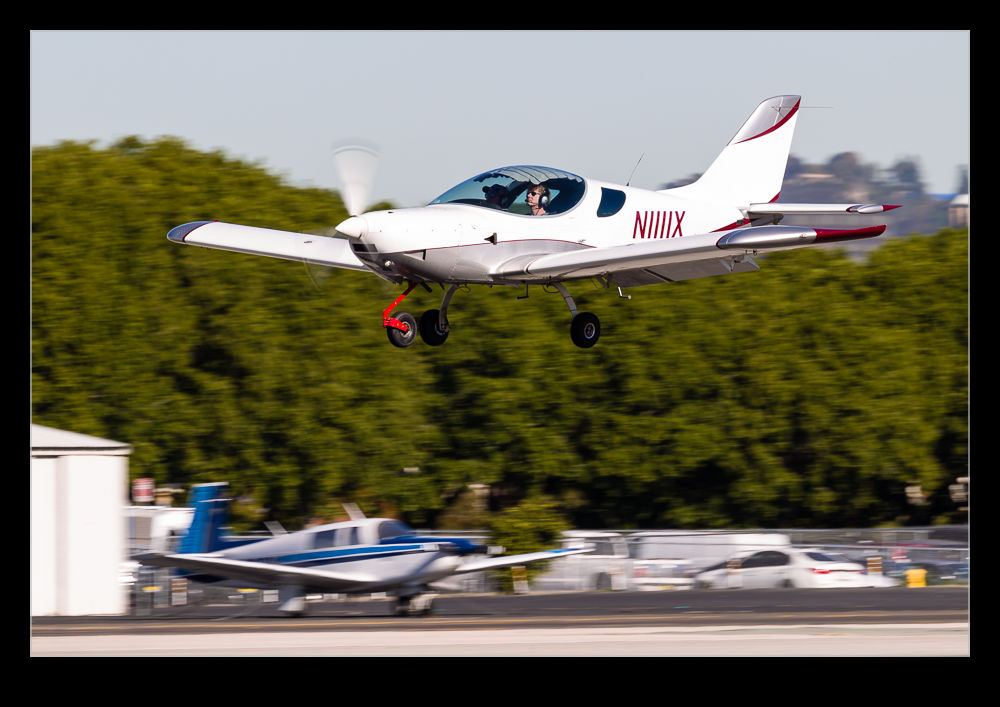 The tower frequency is piped to the terrace so you know what is going on. There are vending machines and bathrooms to cover both ends of the spectrum and, in the past, I have seen the airport police officers handing out stickers to kids. The place is so welcoming you see lots of parents show up with their kids to watch the planes. As a UK based pilot, Pete found this to be an amazing improvement on his usual experiences at small airports.
The tower frequency is piped to the terrace so you know what is going on. There are vending machines and bathrooms to cover both ends of the spectrum and, in the past, I have seen the airport police officers handing out stickers to kids. The place is so welcoming you see lots of parents show up with their kids to watch the planes. As a UK based pilot, Pete found this to be an amazing improvement on his usual experiences at small airports.
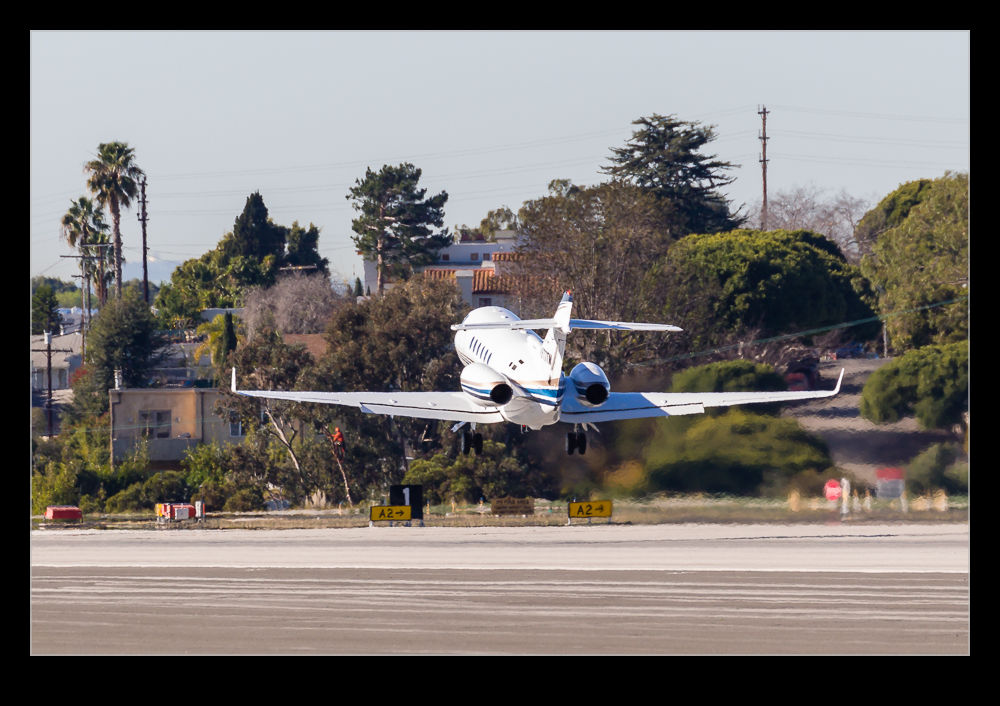 I didn’t actually take my camera initially. I wasn’t sure how long we would be there. As it turned out a couple of cool jets including a nice Gulfstream came in while I was cameraless. No matter. I did get it after a while and got a few shots of traffic before our plans took us onward. Before we left, we did walk across the road to the Museum of Flying. Santa Monica was the home of Douglas Aircraft for many years. The museum was sadly closed when we were there but there was a nice DC-3 on a pole along with an A-4 and an F-86 so something nice to see.
I didn’t actually take my camera initially. I wasn’t sure how long we would be there. As it turned out a couple of cool jets including a nice Gulfstream came in while I was cameraless. No matter. I did get it after a while and got a few shots of traffic before our plans took us onward. Before we left, we did walk across the road to the Museum of Flying. Santa Monica was the home of Douglas Aircraft for many years. The museum was sadly closed when we were there but there was a nice DC-3 on a pole along with an A-4 and an F-86 so something nice to see.
Raptor Vortices
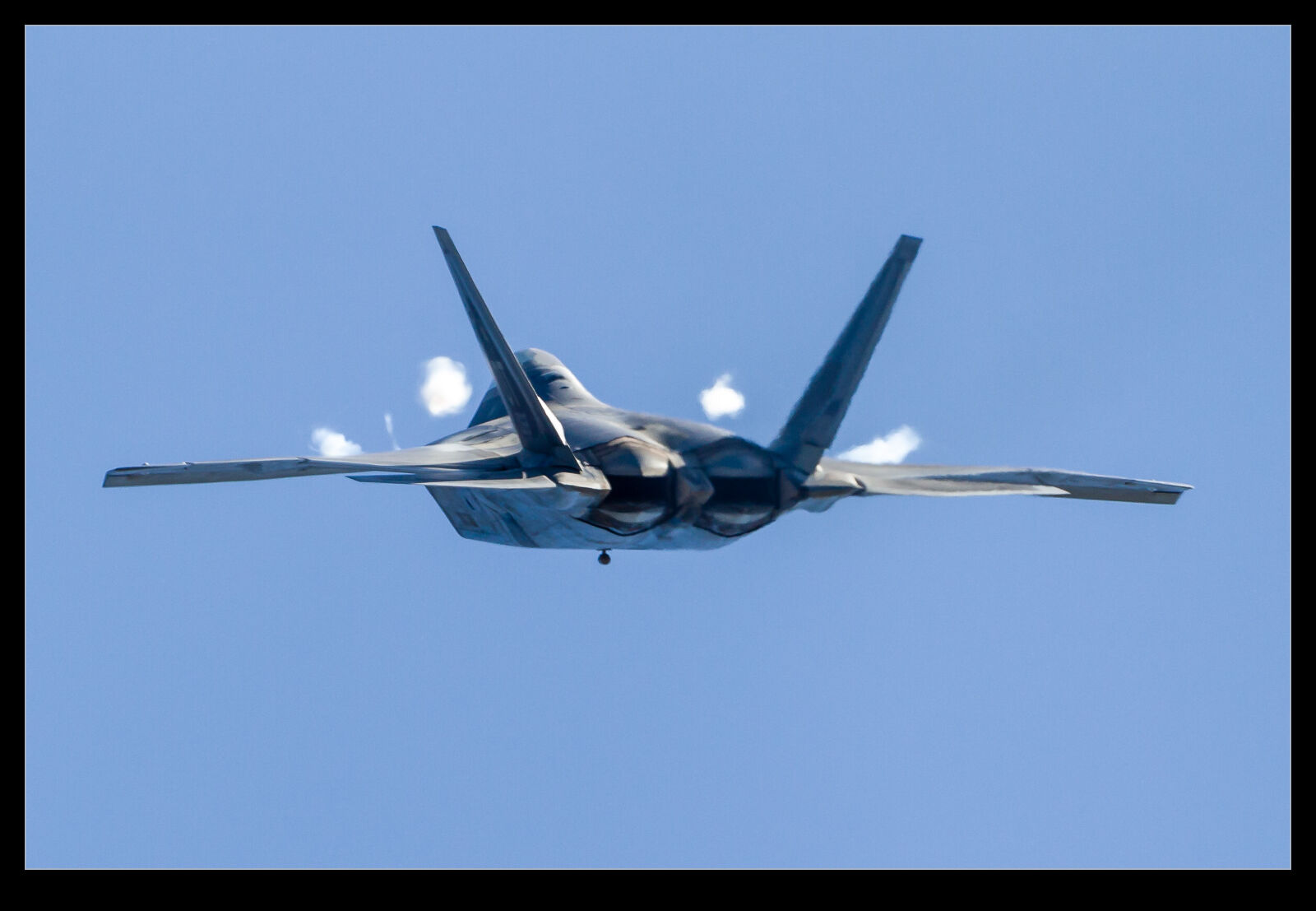 A bit more from the Raptor display today. As the jet flew away from the crowd, it pulled in to the vertical. From a view directly astern, we got a brief view of the vortices forming over the forebody. The jet was quite a way off so these shots are cropped quite a bit. I love the way the vortex sits away from the body. Chino was a pretty dry environment so not a lot of vapor to pull from the air but it still showed up nicely.
A bit more from the Raptor display today. As the jet flew away from the crowd, it pulled in to the vertical. From a view directly astern, we got a brief view of the vortices forming over the forebody. The jet was quite a way off so these shots are cropped quite a bit. I love the way the vortex sits away from the body. Chino was a pretty dry environment so not a lot of vapor to pull from the air but it still showed up nicely.
Canadian Hornet Cockpit Displays
 Previously I may have mentioned my recent efforts to go through images I took a long time ago. The evening show at Chino had a number of performers and one of them was the Canadian Hornet demo. When I go through my images, part of my process is to render all of them at 100% and then view the full size image on one screen and the zoomed in version on the other. This allows me to see whether the shot is sharp and also whether there is anything glaringly wrong with it like bits cut off or someone’s head in the way.
Previously I may have mentioned my recent efforts to go through images I took a long time ago. The evening show at Chino had a number of performers and one of them was the Canadian Hornet demo. When I go through my images, part of my process is to render all of them at 100% and then view the full size image on one screen and the zoomed in version on the other. This allows me to see whether the shot is sharp and also whether there is anything glaringly wrong with it like bits cut off or someone’s head in the way.
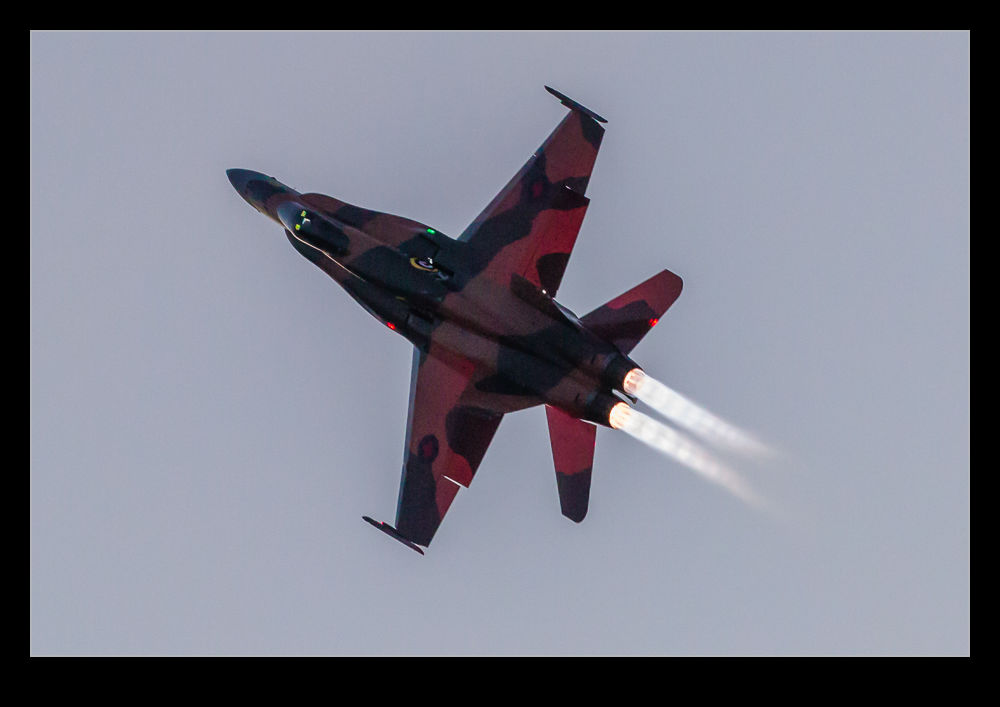 I was going through the shots of the Hornet which flew after the sun had gone below the horizon, I noticed that, as it flew over the top of a loop, I had a view into the cockpit. Normally, this would be dark as the brightness of the day overpowered the shade of the cockpit. However, since it was pretty dark, the glow of the multifunction displays on the panel is clearly visible. We aren’t going to be able to see the details of the displays themselves but they are very conspicuous which is not the norm.
I was going through the shots of the Hornet which flew after the sun had gone below the horizon, I noticed that, as it flew over the top of a loop, I had a view into the cockpit. Normally, this would be dark as the brightness of the day overpowered the shade of the cockpit. However, since it was pretty dark, the glow of the multifunction displays on the panel is clearly visible. We aren’t going to be able to see the details of the displays themselves but they are very conspicuous which is not the norm.
Interesting Raptor Control Inputs
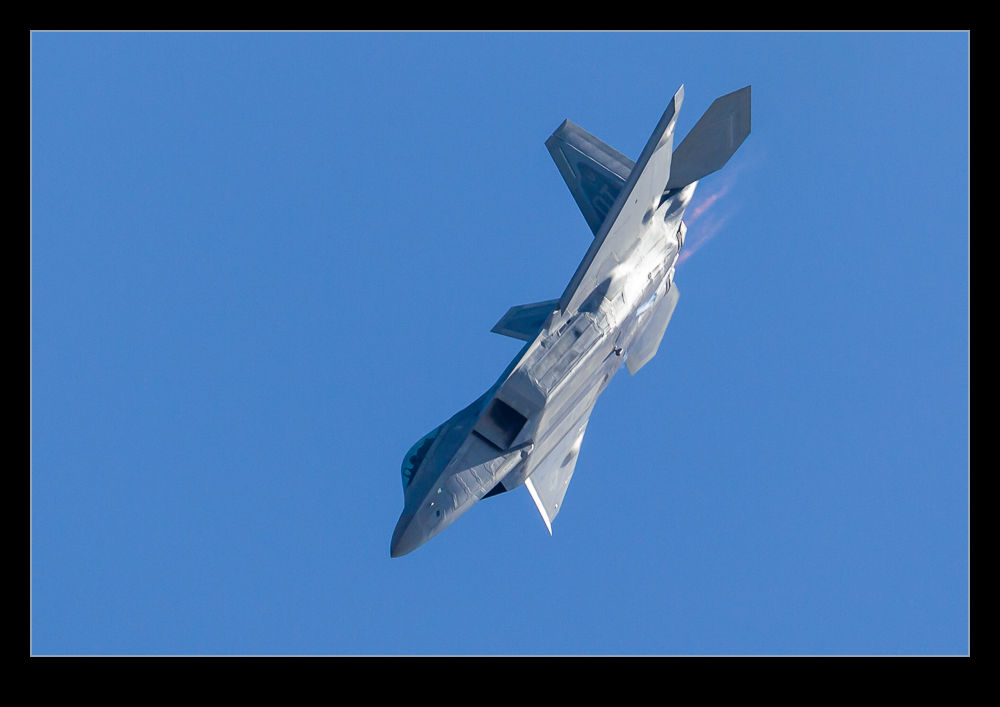 It might be a long time ago that I did anything closely related to the engineering of fighters but there is still a part of me that is a stability and control type of guy. Watching the control inputs and responses of planes is cool as far as I am concerned. With the advent of fly by wire designs, there was considerable scope to play around with the use of the control surfaces to achieve different aims. With no direct linkages to the stick, the pilot can be totally unaware of the choices the system is making for control combinations.
It might be a long time ago that I did anything closely related to the engineering of fighters but there is still a part of me that is a stability and control type of guy. Watching the control inputs and responses of planes is cool as far as I am concerned. With the advent of fly by wire designs, there was considerable scope to play around with the use of the control surfaces to achieve different aims. With no direct linkages to the stick, the pilot can be totally unaware of the choices the system is making for control combinations.
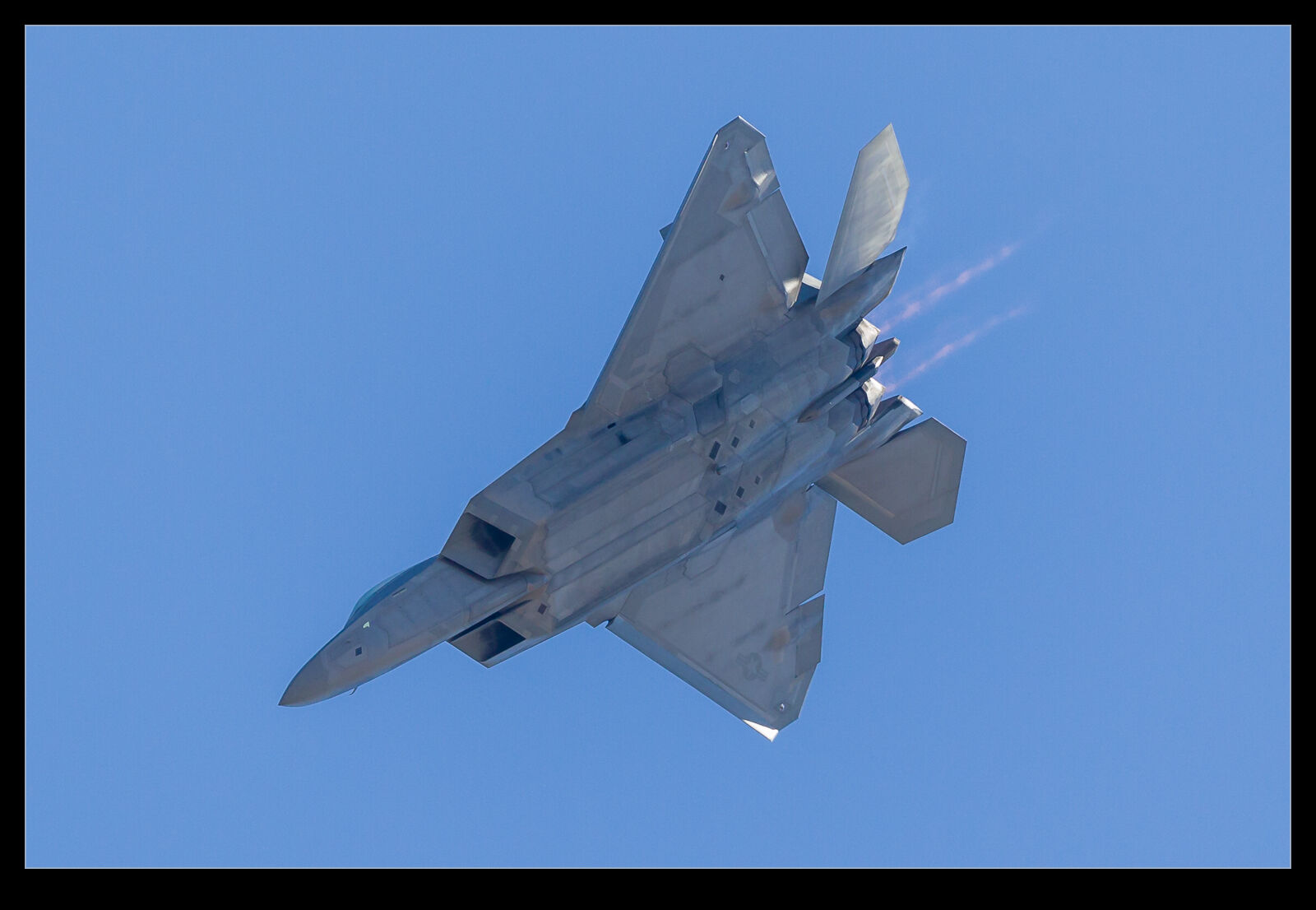 The engineers may have chosen to program the trailing edges to have different deflections inboard and outboard to offload the outer portion of the wing for example. The F-22 makes use of a variety of interesting control inputs. For example, it doesn’t have a traditional speed brake. I assume this was removed for stealth reasons. Instead, the control surfaces move counter to each other. You may have inboard flaps going down and outboard flaps going up. The moments cancel out but all increase drag incrementally so the effect is like having a speed brake deployed.
The engineers may have chosen to program the trailing edges to have different deflections inboard and outboard to offload the outer portion of the wing for example. The F-22 makes use of a variety of interesting control inputs. For example, it doesn’t have a traditional speed brake. I assume this was removed for stealth reasons. Instead, the control surfaces move counter to each other. You may have inboard flaps going down and outboard flaps going up. The moments cancel out but all increase drag incrementally so the effect is like having a speed brake deployed.
Since the aircraft is also unstable, you may have tail deflections that seem at odds with the maneuver being flown. During the Chino show, the usual routine was flown (usual for an F-22 but not many other jets) and, as I look through a bunch of the shots, I see some quite unusual control inputs. If you are in to such things, these may appeal to you. Gary, are you reading this?
Ripples in the Skin
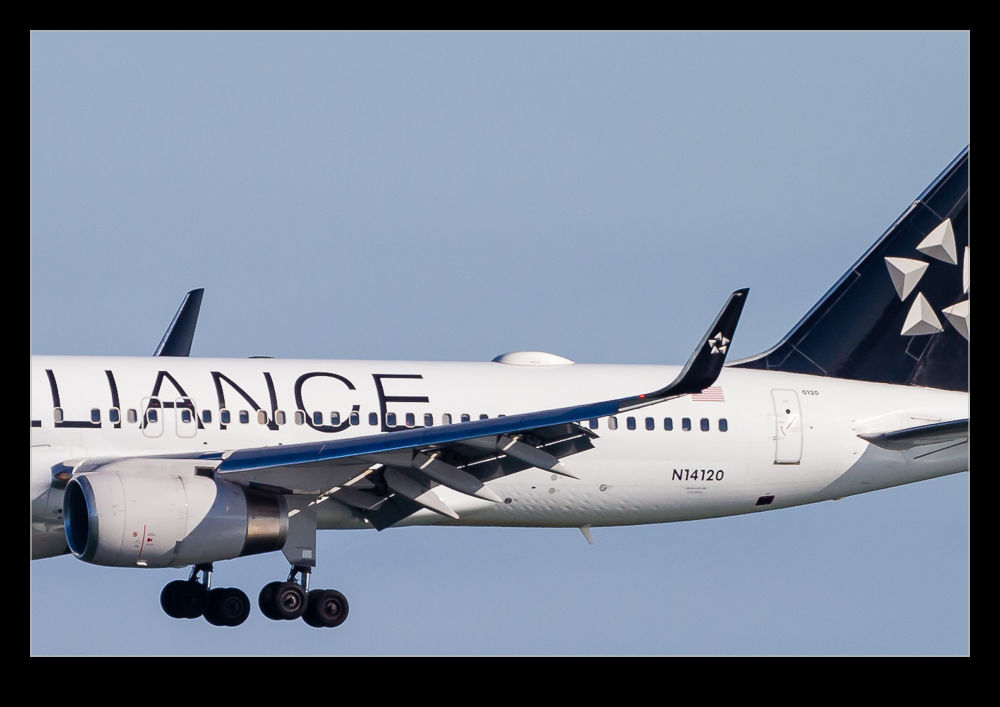 The construction technique for aluminum aircraft fuselages is known as semi-monocoque. A monocoque structure takes the entire load through the shell of the structure. In airframes, the skin is very thin and so frames and longerons are joined to the inside to provide additional rigidity while the skin still takes a lot of the load. If you haven’t ever seen the cross section of an aircraft structure, you may be surprised to see just how thin the skin panels actually are. They are perfectly up to the task of pressurization and bending loads so no need to panic.
The construction technique for aluminum aircraft fuselages is known as semi-monocoque. A monocoque structure takes the entire load through the shell of the structure. In airframes, the skin is very thin and so frames and longerons are joined to the inside to provide additional rigidity while the skin still takes a lot of the load. If you haven’t ever seen the cross section of an aircraft structure, you may be surprised to see just how thin the skin panels actually are. They are perfectly up to the task of pressurization and bending loads so no need to panic.
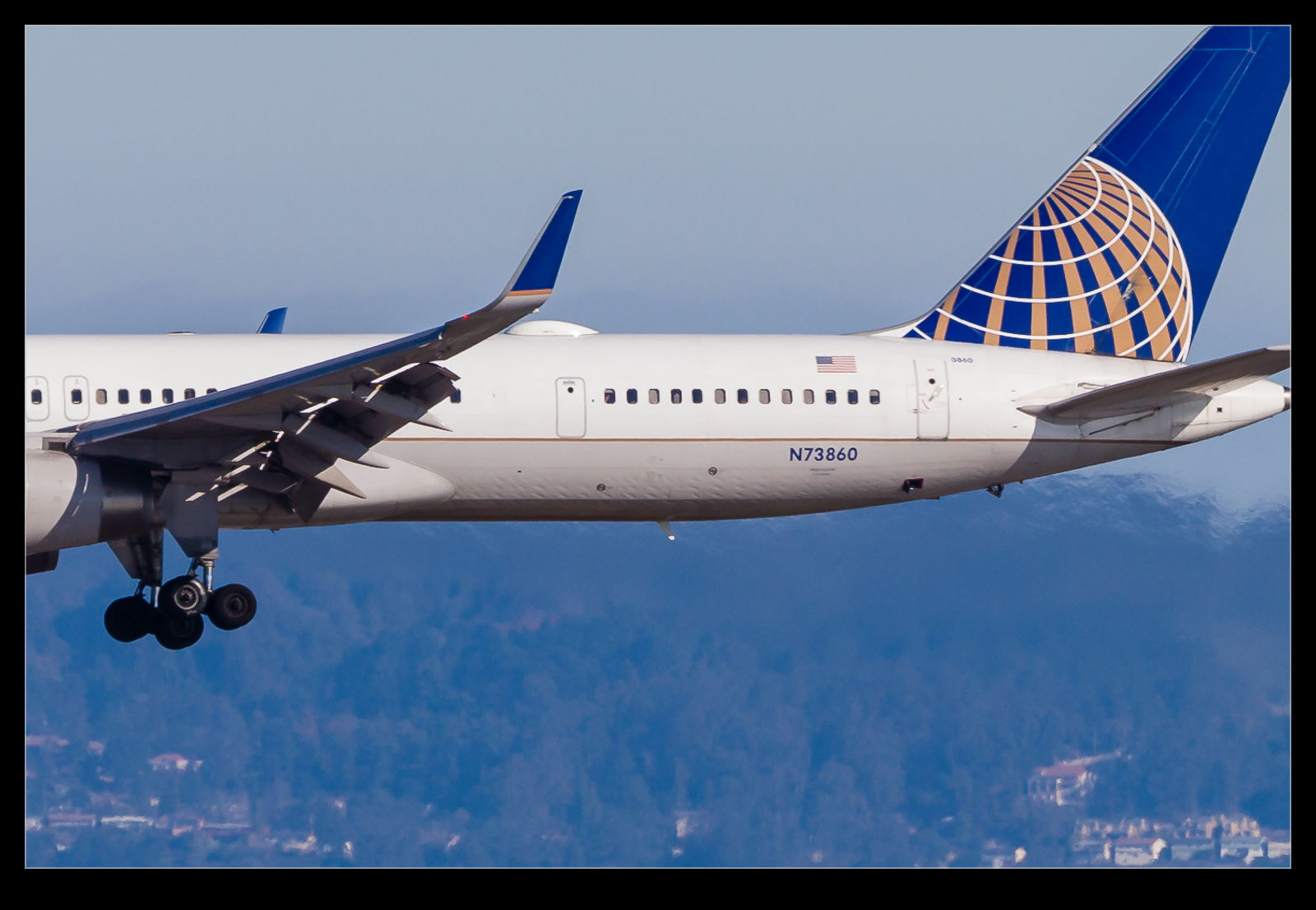 An outcome of this design approach is that the panels between the frames and longerons can experience some load directions that induce a measure of buckling. Nothing that is beyond their elastic limits but something that can be apparent if the light comes from the right angle. The lower side of the rear fuselage of the Boeing 757 is an area that is susceptible to this in certain flight conditions. I saw a number of them recently – both -200 and -300 models – and they both were showing visible distortion of the panels. The sun angle meant that the shadowing of these areas was apparent.
An outcome of this design approach is that the panels between the frames and longerons can experience some load directions that induce a measure of buckling. Nothing that is beyond their elastic limits but something that can be apparent if the light comes from the right angle. The lower side of the rear fuselage of the Boeing 757 is an area that is susceptible to this in certain flight conditions. I saw a number of them recently – both -200 and -300 models – and they both were showing visible distortion of the panels. The sun angle meant that the shadowing of these areas was apparent.
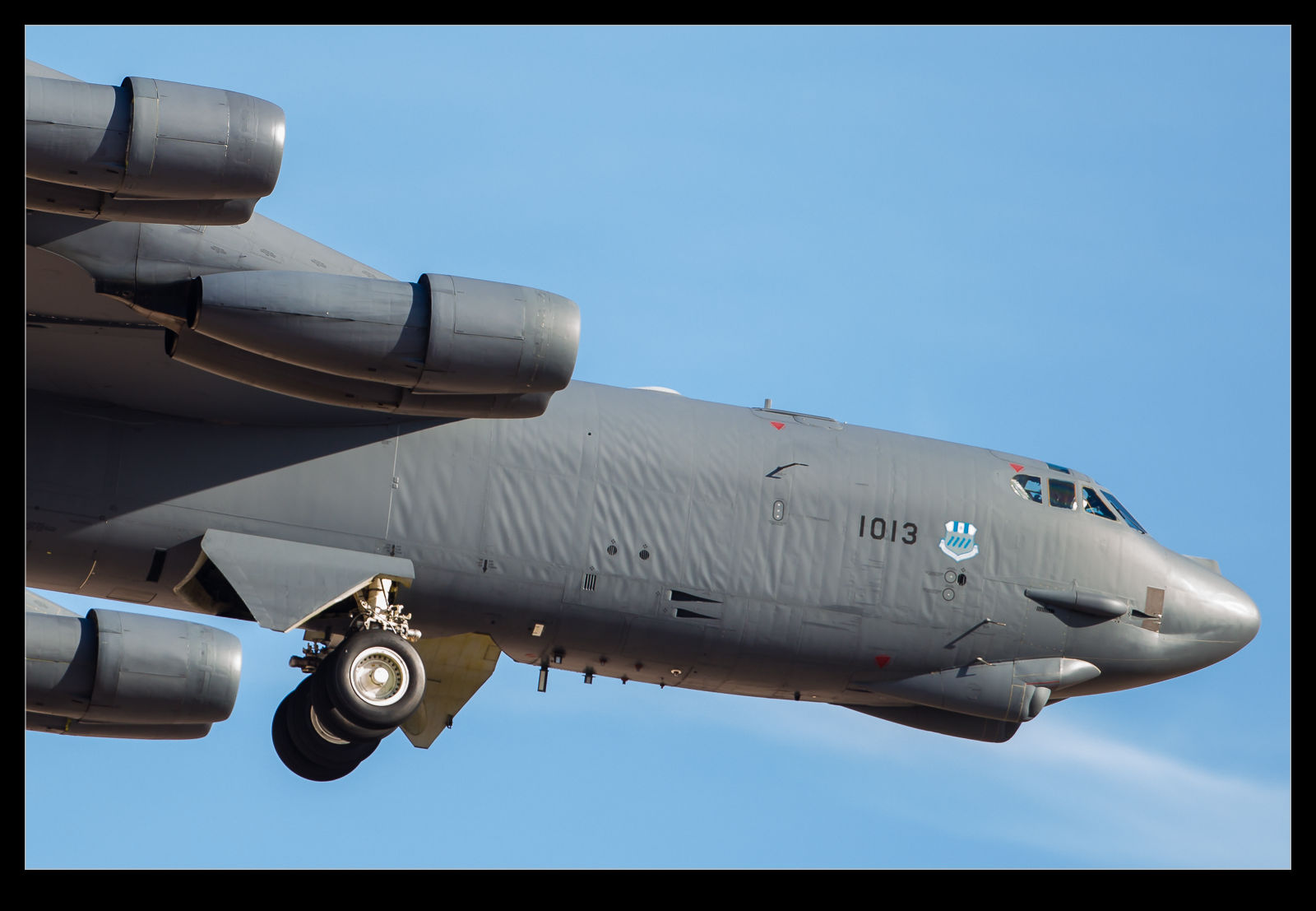 The 757 is by no means the only aircraft to experience this phenomenon. The B-52 Superfortresss is a jet that shows this effect on plenty of occasions. I have heard people comment on it being a function of the age of the airframes but it is more of a result of the design of the basic structure than anything else. Certainly nothing to be immediately concerned about.
The 757 is by no means the only aircraft to experience this phenomenon. The B-52 Superfortresss is a jet that shows this effect on plenty of occasions. I have heard people comment on it being a function of the age of the airframes but it is more of a result of the design of the basic structure than anything else. Certainly nothing to be immediately concerned about.
Some Gratuitous Raptor Shots
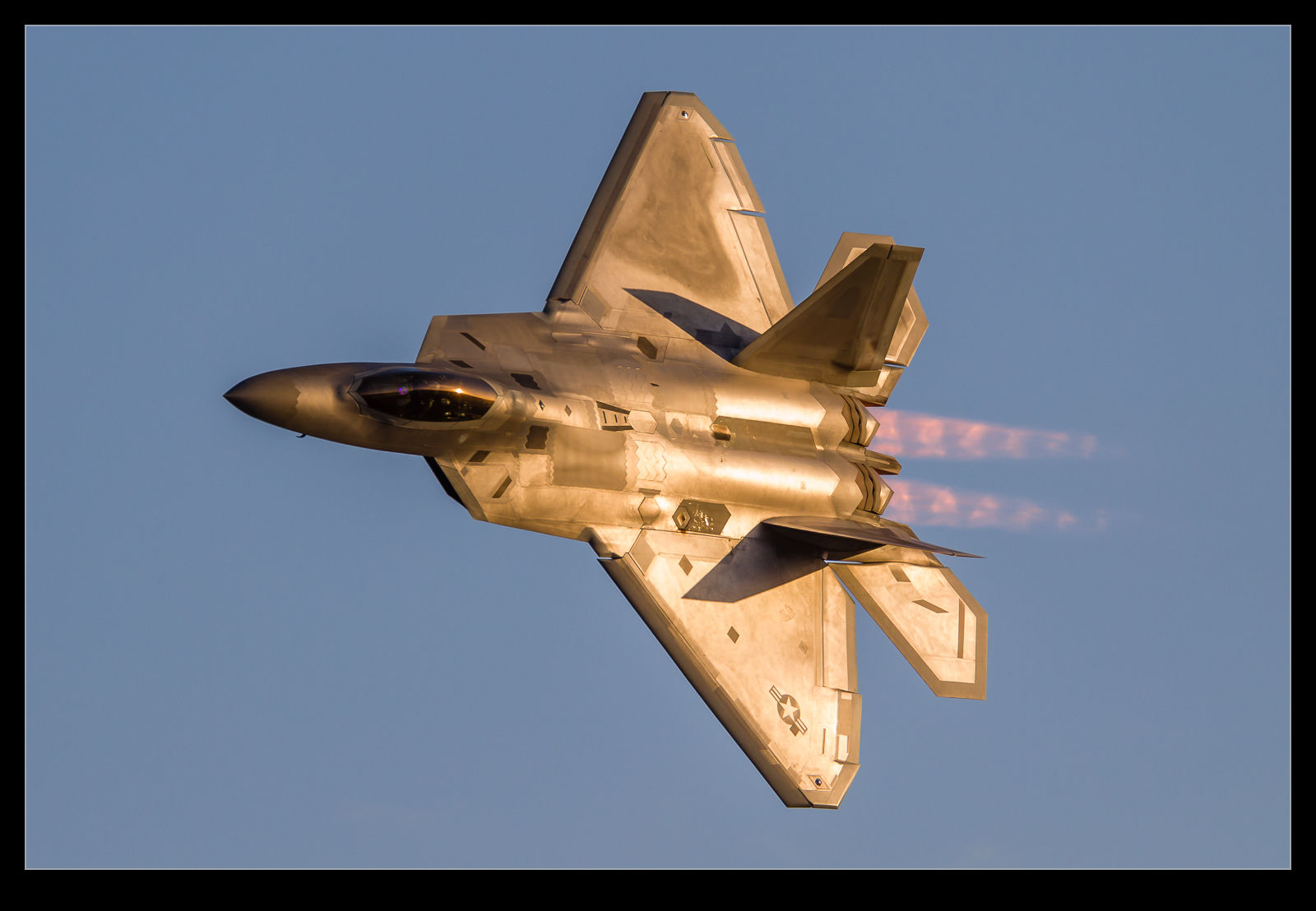 Unfortunately, I have a rather large backlog of images that I haven’t done much with. This is sometimes the result of having a number of events in a short space of time and other times it is the result of laziness! Last year I covered the Planes of Fame show at Chino for GAR. I got a lot of shots while I was there and I needed a selection to illustrate the piece so I dived in, found some good examples, worked on those and put them into the feature.
Unfortunately, I have a rather large backlog of images that I haven’t done much with. This is sometimes the result of having a number of events in a short space of time and other times it is the result of laziness! Last year I covered the Planes of Fame show at Chino for GAR. I got a lot of shots while I was there and I needed a selection to illustrate the piece so I dived in, found some good examples, worked on those and put them into the feature.
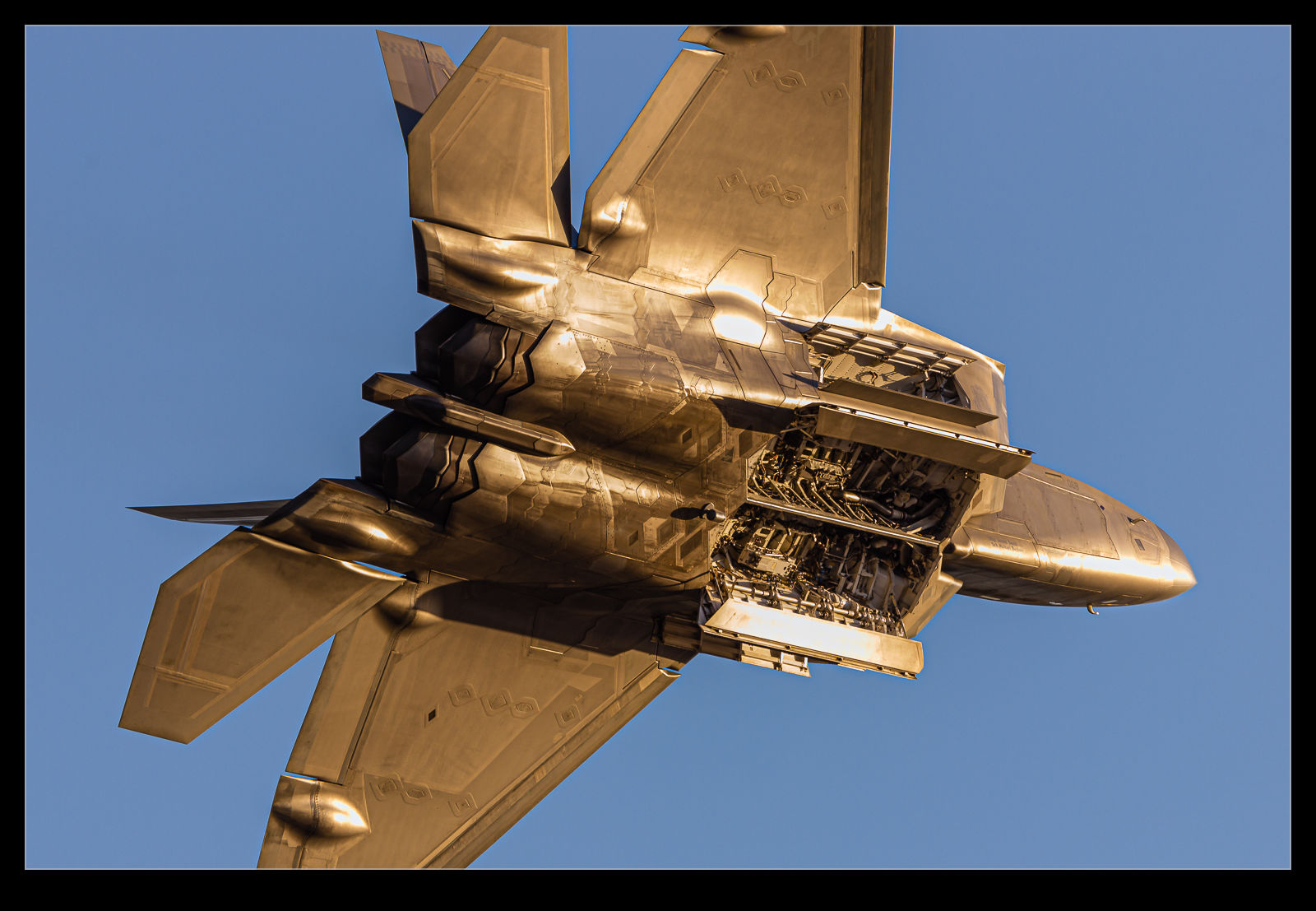 Unfortunately, I never got around to undertaking a proper run through of the shoot. I only realized this recently so I have started to go through the images when the time allows. One part of the show I really liked was the twilight show on the Friday. This included a display by the USAF F-22. In the last light of the day, the airframe looked really great.
Unfortunately, I never got around to undertaking a proper run through of the shoot. I only realized this recently so I have started to go through the images when the time allows. One part of the show I really liked was the twilight show on the Friday. This included a display by the USAF F-22. In the last light of the day, the airframe looked really great.
 Running through the shots I found a few of the jet that I really liked. (I found more than will work for this post and some that I like for various reasons but won’t really gel with most people.) As a result, here are a sample of the shots I have been finding. Now I am starting to think about air shows this year for the first time. I might have to go to this one again!
Running through the shots I found a few of the jet that I really liked. (I found more than will work for this post and some that I like for various reasons but won’t really gel with most people.) As a result, here are a sample of the shots I have been finding. Now I am starting to think about air shows this year for the first time. I might have to go to this one again!
